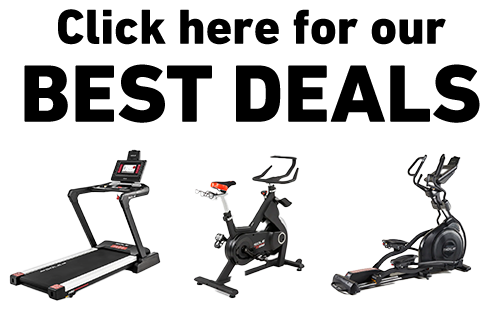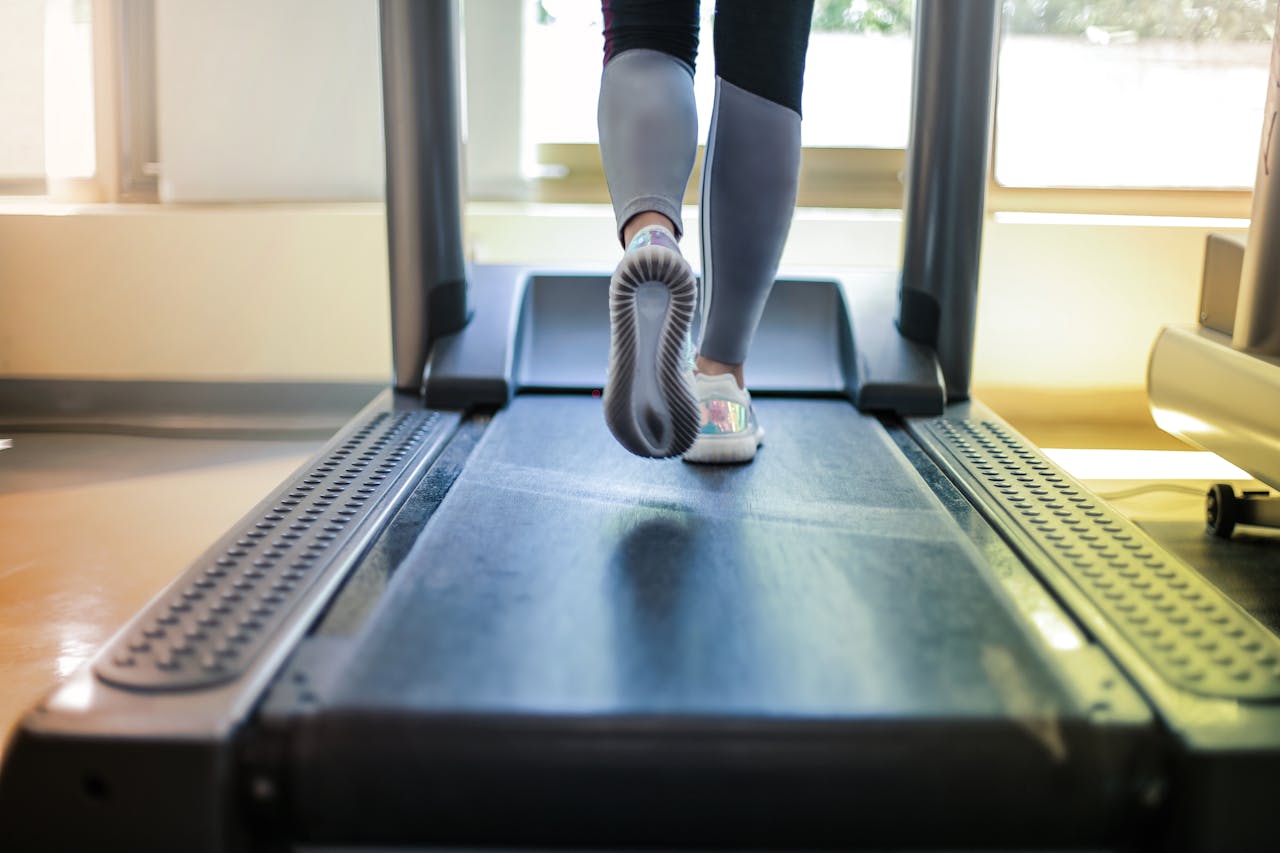Key Takeaways
- Proper treadmill belt tension ensures smooth operation and prevents damage to the machine.
- A belt that’s too loose can slip, leading to discomfort and potential injuries.
- Overly tight belts increase friction, which strains the motor and rollers, potentially leading to costly repairs.
- Regularly checking and adjusting the belt is essential for safe and effective workouts.
- SOLE treadmills come with easy-to-adjust belt tension features to keep your treadmill running efficiently.
How Tight Should a Treadmill Belt Be?
Maintaining the correct treadmill belt tension is key to getting the most out of your workouts and keeping your equipment in top condition. Whether you’re a walker or a runner, knowing how tight the belt should be will help you avoid unnecessary wear and tear and ensure a safer, smoother workout.
|
At SOLE Fitness, we're proud to offer the best treadmills for your home or gym. These machines are crafted to meet the highest standards of quality and performance, ensuring they are ideal for anyone - from fitness novices to seasoned athletes. Featured Product SOLE Treadmills: Starting at $1,199.99, SOLE treadmills excel in ergonomic design, durability, and value. Equipped with advanced cushioning to minimize joint impact, powerful, quiet motors, and wide running surfaces, they suit any fitness level. |
Why Belt Tightness Matters
Belt tightness directly affects how your treadmill performs. If the belt is too loose, it may slip or feel unsteady under your feet, which can lead to injury. On the other hand, a belt that is too tight puts extra pressure on the motor and rollers, leading to premature wear and potential mechanical issues.
Getting the tension just right ensures the belt moves smoothly with every step you take.
 Regular belt checks keep your treadmill performing at its best.
Regular belt checks keep your treadmill performing at its best.
How to Check Treadmill Belt Tightness
- Turn off the treadmill: Make sure the machine is powered down for safety.
- Unplug the treadmill: Always unplug before performing any maintenance.
- Locate the center of the belt: Stand in the middle of the treadmill and focus on the belt.
- Lift the belt: Gently lift the belt upwards from the center. You should be able to lift the belt about 3-4 inches.
- Assess the belt tightness:
- Too loose: If it lifts more than 4 inches, the belt is too loose.
- Too tight: If it barely lifts, it’s too tight.
- Regular checks: Perform this check regularly to keep your treadmill in optimal condition.
What Happens if the Belt is Too Tight or Too Loose?
- If the belt is too loose, it may slip underfoot, disrupting your stride and making running uncomfortable.
- A loose belt can lead to damage over time or cause you to trip.
- If the belt is too tight, it increases friction, causing the motor to work harder than necessary.
- Excessive strain from a tight belt can burn out the motor or damage the belt, leading to costly repairs.
- Proper belt adjustment helps prevent these issues and ensures smooth, safe operation.
 Regular treadmill maintenance helps extend the life of your machine.
Regular treadmill maintenance helps extend the life of your machine.
How to Adjust Your Treadmill Belt
- Locate the adjustment bolts: These are usually found at the rear of the treadmill deck, near the belt.
- Get the right tool: Most treadmills come with a hex key or Allen wrench for adjusting the belt.
- Turn the bolts:
- To tighten the belt: Turn the adjustment bolts clockwise.
- To loosen the belt: Turn the adjustment bolts counterclockwise.
- Adjust both sides equally: Ensure you turn both bolts evenly to maintain proper alignment of the belt.
- Test the treadmill: Once adjusted, run the treadmill at a slow speed and check for slipping or misalignment.
- Fine-tune if necessary: If the belt still slips or feels misaligned, make small adjustments and test again until the belt runs smoothly.
For a detailed guide specific to SOLE treadmills, check out our article on How to Adjust a SOLE Treadmill Belt. It covers everything you need to know to keep your SOLE treadmill running smoothly.
Keep Your Treadmill Running Smoothly
Regularly checking and adjusting your treadmill belt is an essential part of maintaining your machine. It keeps your workouts safe, improves performance, and extends the lifespan of your equipment. By staying on top of these maintenance tasks, you ensure your treadmill delivers a smooth and consistent workout every time.
Invest in a Reliable Treadmill with SOLE
At SOLE, we design treadmills built for performance, durability, and ease of use. Our models offer user-friendly belt tension adjustment features to keep your workouts smooth and your equipment running efficiently.
Whether you’re looking for something basic like the SOLE F63—with its quiet motor and compact folding feature—or a high-performance machine like the SOLE F85—with a 4.0 HP motor and WiFi-enabled touchscreen—we’ve got you covered.
With weight capacities up to 400 lbs, spacious running surfaces, and advanced features like wireless device charging and Bluetooth speakers, our treadmills cater to every fitness level. And with the added benefit of the SOLE+ App, you’ll have access to free fitness classes and real-time workout tracking.
Frequently Asked Questions (FAQ)
How often should I check my treadmill belt’s tightness?
You should perform regular checks on your treadmill belt tightness. It’s important to check it periodically to ensure smooth operation and to avoid unnecessary wear or damage.
How do I know if my treadmill belt is too tight or too loose?
You can test the belt tension by lifting the belt from the center. If it lifts more than 3-4 inches, it’s too loose. If it barely lifts, the belt is too tight.
What are the signs of a loose treadmill belt?
A loose belt may slip underfoot, disrupt your stride, or feel unsteady.
What should I do if my treadmill belt keeps slipping even after tightening?
If your belt continues to slip after adjusting the tension, it can indicate a bigger issue such as excessive wear or a mechanical problem. Regular checks and adjustments should resolve minor slippage.
Can I tighten the treadmill belt myself?
Yes, you can adjust the belt yourself using the adjustment bolts located at the rear of the treadmill. Follow the steps for even tightening on both sides to maintain proper alignment.



Leave a comment
This site is protected by hCaptcha and the hCaptcha Privacy Policy and Terms of Service apply.